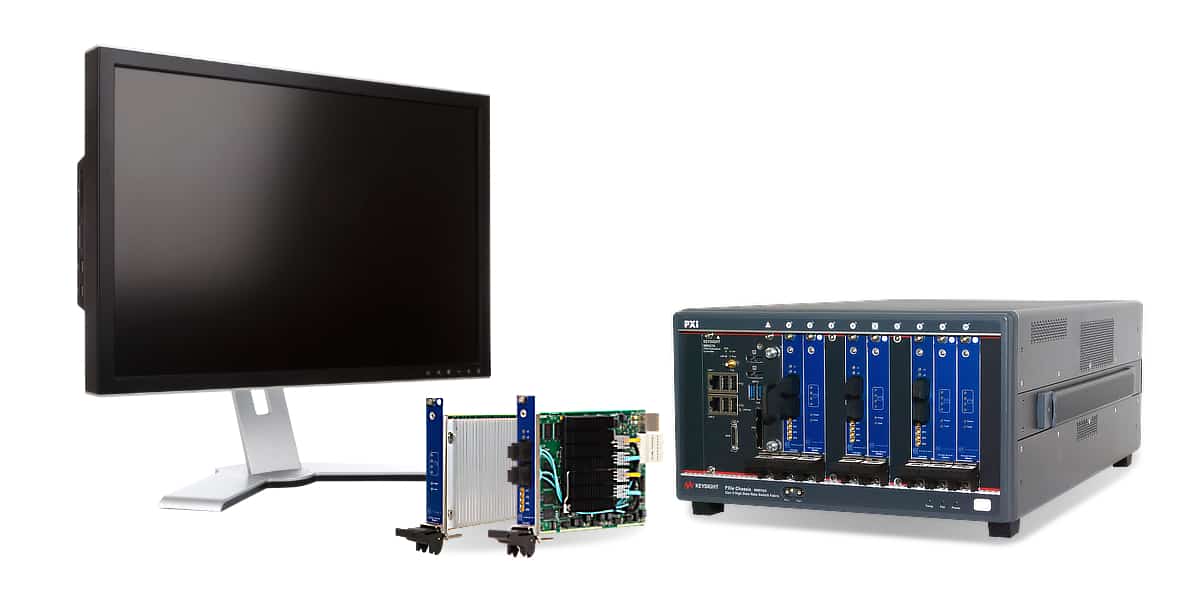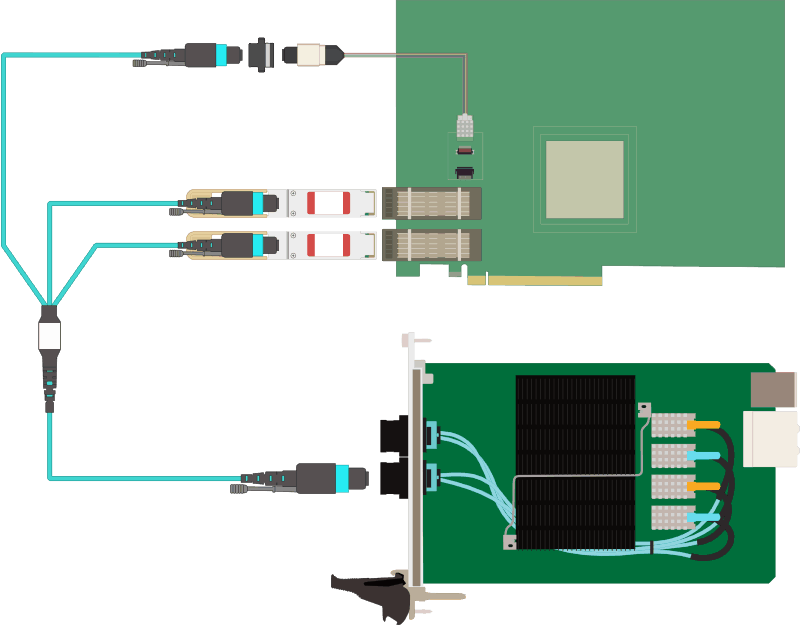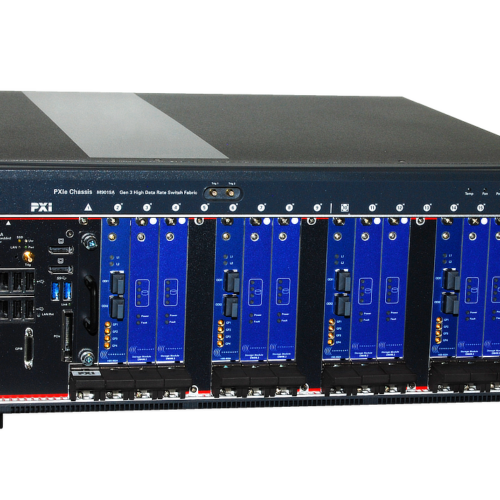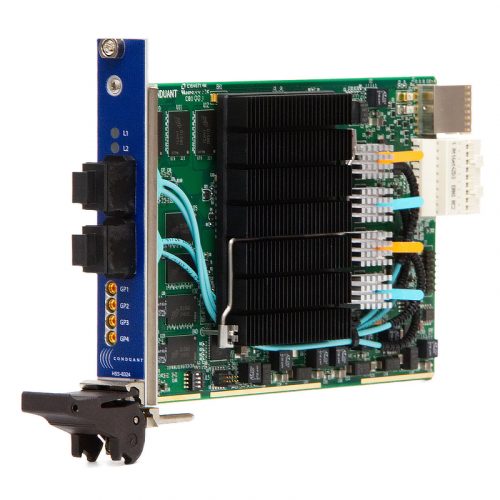Modular & Flexible
The Cobra High Speed Recorder is a unique solution for high speed data recording and playback at a rate of up to 20 GB/s (160 Gbps). The system utilizes the PXI Express architecture to provide a modular, flexible solution that can be customized to nearly any requirement. The main recording engine, Cobra, is a
PXIe board with high speed RAM and a high performance Xilinx FPGA. This board manages the data movement to and from storage devices and also provides optical fiber channels for high speed data input or output. The Cobra board can be used alone or in concert with additional Cobra boards.
A typical system configuration will include an Intel processor based controller, one or more Cobra boards, and one or more SSD based storage boards. The PXI Express backplane allows numerous configurations and combinations of storage and recorder boards to match nearly any requirement. Extended systems can also employ an additional chassis to provide additional storage capacity if desired.
Peer-to-Peer PCI Express
Conduant’s StreamStor® architecture provides the capability to move data on the PCI Express fabric using Peer-to-Peer techniques. This allows direct hardware data streaming from A/D or other PCI Express sources to or from the data storage without being impaired by system bottlenecks. The system can also accept data from multiple PCI Express sources simultaneously.
Command/Control
The Cobra High Speed Recorder can operate independently from a host computer with command/control performed over a network connection. Control can also be automated from a software application using the StreamStor® software API on a network connected computer. A cabled PCI Express option provides connectivity to a host computer for command/control and/or high-speed data access. The cabled PCI Express option provides a 64 Gbps link that can be optionally extended to support long distance links using a PCI Express fiber optic cable.
Solid State Storage
The standard storage devices used in the Cobra High Speed Recorder system are M.2 NVMe PCI Express solid state drives. These devices are installed with up to 4 per PXI Express slot using the
DM-4M.2 Storage Unit. These drives are available in capacities up to 4 TB each, with even higher capacities expected in the future. The use of solid state drives provides consistent performance even with high levels of shock and vibration. Current standard configurations support up to 128 TB of storage in a 4U 22″ deep chassis. Check with your Conduant sales representative for the latest available storage offerings compatible with the Cobra system.
High Speed Serial (Optical)
The Xilinx FPGA on the Cobra board optionally includes up to 24 channels (48 fibers) of high speed optical and can be configured to support many different high speed serial protocols. The protocols possible over these interfaces include
ODI (Optical Data Interface), Interlaken, Serial FPDP, and Aurora. Other interfaces can be added according to customer requirements.
The optical interfaces can also be used to extend the recorder performance. For example, an ODI recorder is capable of 160 Gbps using 4 recorders and a 12 x 14.1 Gbps interface. The optical interface provides a high speed data path that is daisy chained to each recorder so that the speed capability is aggregated across the cooperating recorders.
The 24 optical fibers can be tailored to customer requirements by bonding channels to create higher speed channels or used independently to record large numbers of slower channels. The Xilinx FPGA also allows Conduant the flexibility to customize an implementation for a particular protocol.
Trigger/Sync Capability
The Cobra hardware is connected to the PXI Express backplane instrumentation signals and also has front panel signal connectors. These signal sources can be adapted to customer requirements to provide unique capabilities required for a customer application—triggers, event marking, etc.
Software API
The included software development kit (SDK) includes support for .NET development environments. This includes languages such as C#, Visual Basic, and C++ CLI. The SDK also includes a complete “C” based interface to facilitate usage of nearly any programming language. This includes programming environments such as LabVIEW and MATLAB.
The SDK includes support for features such as wrap mode (circular buffer) for very long duration recording, playback looping, and multiple recording (file) management. Additional features are added regularly and the software can be customized as needed.









